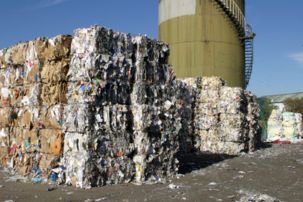Lesson summary
Students investigate the chemical changes required to change raw materials into materials ready for manufacturing. They find out how iron, aluminium and plastics are produced. They use chemical equations that show how raw materials are chemically changed into materials that can be used for manufacturing.
Learning intentions:
Students will...
- use symbols in chemical equations to show how materials are processed
- explore the processing of raw materials including the use of heat, electricity and catalysts.
Lesson guides and printables
Lesson details
Curriculum mapping
Australian Curriculum content descriptions:
Year 10 Science:
- Different types of chemical reactions are used to produce a range of products and can occur at different rates (ACSSU187)
- The atomic structure and properties of elements are used to organise them in the Periodic Table (ACSSU186)
Syllabus Outcomes: SC5-16CW.
Resources required
- Computers
- Access to the internet including YouTube
- Scrap paper
- Scissors and sticky tape
Skills
This lesson is designed to build students’ competencies in the following skills:
- communication
- critical thinking
Additional info
Planet Ark’s National Recycling Week started in 1996 to bring a national focus to the environmental benefits of recycling. This highly regarded annual campaign continues to educate and stimulate behaviour change by promoting kerbside, industrial and community recycling initiative. It also gives people the tools to minimise waste and manage material resources responsibly at home, work and school. In partnership with Planet Ark, we have developed lessons from early learning through to year 10 to help educators bring these important topics into the classroom.
National Recycling Week is held in the second week of November each year but you can recycle all year-round with these lessons which were designed to be used at any time. Click here to find out more about National Recycling Week and the Schools Recycle Right Challenge.


Welcome back!
Don't have an account yet?
Log in with:
By signing up to Cool.org you consent and agree to Cool's privacy policy to
store, manage and process your personal information. To read more, please see
our privacy policy here(Opens in new tab).
Create your free Cool.org account.
Many of our resources are free, with an option to upgrade to Cool+ for premium content.
Already have an account?
Sign up with:
By signing up to Cool.org you consent and agree to Cool's privacy policy to
store, manage and process your personal information. To read more, please see
our privacy policy here(Opens in new tab).